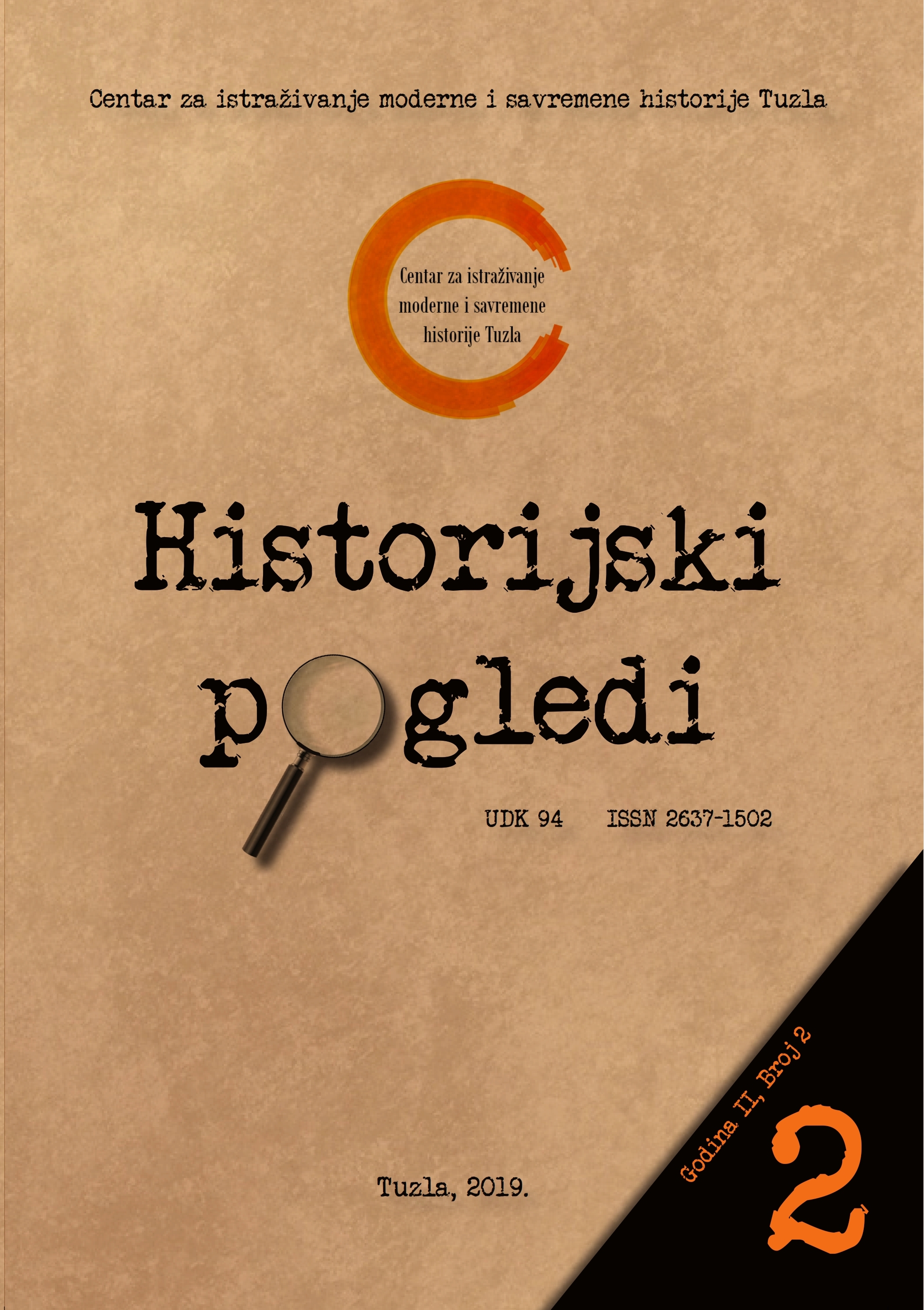MIGRACIJE MUSLIMANA IZ ZAPADNE BOSNE NA PODRUČJE BANIJE I KORDUNA U SOCIJALISTIČKOM PERIODU I VJERSKO ORGANIZIRANJE VJERNIKA ISLAMSKE VJEROISPOVJESTI U SISKU I NA KORDUNU
MUSLIMS MIGRATIONS FROM WESTERN BOSNA TO THE BANIJA AND KORDUN AREA IN THE SOCIALIST PERIOD AND THE RELIGIOUS ORGANIZATION OF MUSLIMS IN SISAK AND KORDUN
Author(s): Filip ŠkiljanSubject(s): Comparative history, Economic history, Social history, WW II and following years (1940 - 1949), Post-War period (1950 - 1989), Migration Studies
Published by: Centar za istraživanje moderne i savremene historije Tuzla
Keywords: Muslims; Bosniaks; Sisak; Kordun; Croatia; migrations;
Summary/Abstract: Muslims began to arrive in the area of Sisak and Kordun in a larger number only in the sixties of the twentieth century. Most of them came to Sisak from the West Bosnian municipalities of Bosanski Novi, Bosanska Krupa, Cazin, Velika Kladusa, Prijedor, Bosanska Dubica, while they came to Kordun mainly from the areas of Velika Kladusa and Cazin. Displacement into an urban center like Sisak in a labor camp in Capraga was a completely different character since settling in the rural zone between the Black Stream and Katinovec in the north and the Masina in the south (more than 50 kilometers distance). Sisak-based workers from western Bosnia came to Sisak for employment, while the Greater Cold and Cazin Muslims settled in Kordun mainly due to overpopulation in the zones in which they lived. The life rhythms of each other differed greatly. Metallurgical workers had permanent incomes, lived in specially built buildings mixed with other workers to those who had other religions and nationalities. The standard of living for all the workers in Caprago was much more equal, and despite religious and national differences, immigrant children entered national and religious mixed marriages. In contrast, the Cordon Muslims lived in very closed communities that remained religious and nationally homogeneous. This group, scattered in ten villages and hamlets at a distance and several kilometers from each other, lived mainly from agriculture and livestock, and individuals worked in Slovenia, Austria and Germany while their families lived in Kordun villages. Most of the Muslims who worked abroad were able to earn enough money to build houses not far from their home villages in a given period and thus maintain ties with friends and relatives and have the opportunity to create their own economy. Being engaged in farming and livestock farming, these Muslims lived, according to their own perception, in a fertile land from the land in the Cazin region. There is another big difference between Sisacki and Kordun Muslims. For the last war (1991-1995), the Kordun Muslims experienced an exodus, most often in their native places in western Bosnia, and they mobilized into various armies (from the Army of Bosnia and Herzegovina, through the 'grandmother' to the army of the Republic of Srpska Krajina and the Croatian Army ). Some of them, due to circumstances in which they found themselves during the war in several armies, and those who escaped or were expelled in 1991 captured the stolen, destroyed and burnt property when they returned after Operation Storm in 1995. By contrast, the Muslims of Sisak and its surroundings were very often Croatian volunteers and participated in the defense of their places of residence (eg Mošćenica) and other settlements in Banija and Croatia. Due to their religious and national affiliation, some of them had problems in the Croatian Army, and many did not exercise their rights as Croatian defender in the post-war period. After the war, the Kordun community increased by influx of new Muslims and high natural increase, while the Sisak community largely stagnated stagnated, and has recently been somewhat reduced due to the complete collapse of Sisak Ironworks, or the departure of younger persons abroad to work.
Journal: HISTORIJSKI POGLEDI
- Issue Year: II/2019
- Issue No: 2
- Page Range: 345-363
- Page Count: 19
- Language: Bosnian, Croatian, Serbian

